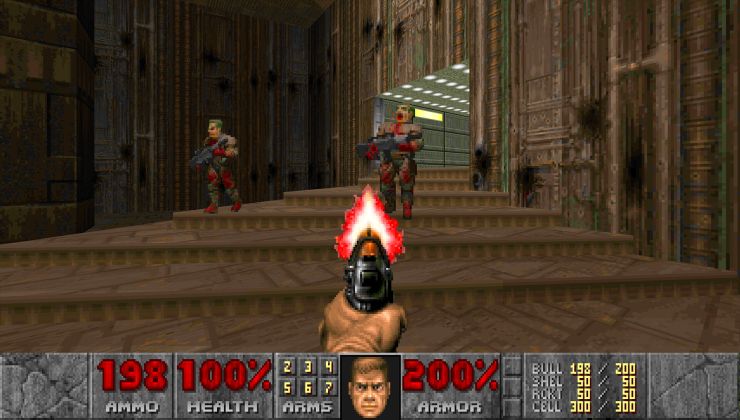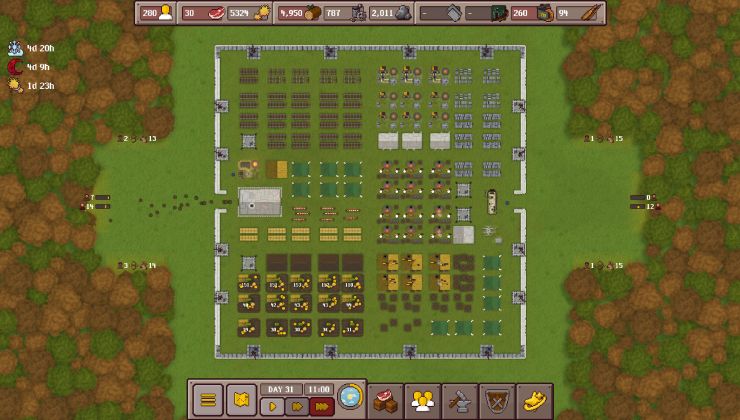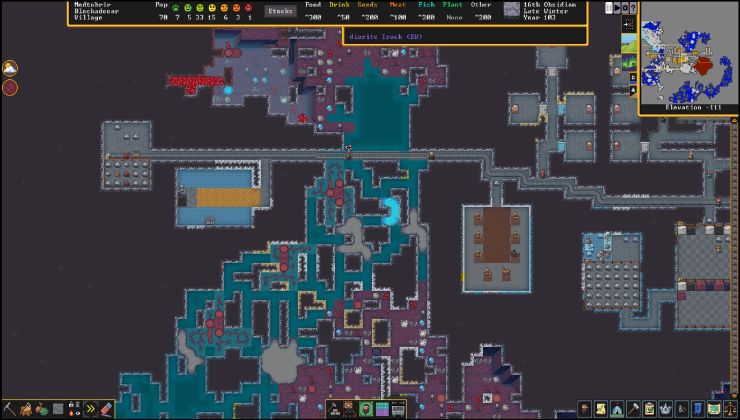As if you forgot, right? Today, the real next generation in gaming begins, with the release of the NVIDIA GeForce RTX 3080 as the first in the desktop Ampere architecture.
Need a reminder of just how ridiculous and powerful the RTX 3080 is? Here's some specs:
| GEFORCE RTX 3080 | |
|---|---|
| NVIDIA CUDA® Cores | 8704 |
| Boost Clock (GHz) | 1.71 |
| Standard Memory Config | 10 GB GDDR6X |
| Memory Interface Width | 320-bit |
| Ray Tracing Cores | 2nd Generation |
| Tensor Cores | 3rd Generation |
| Maximum GPU Temperature (in C) | 93 |
| Graphics Card Power (W) | 320 |
| Recommended System Power (W) (2) | 750 |
| Supplementary Power Connectors | 2x PCIe 8-pin |
Additional details: they will support the latest Vulkan, OpenGL 4.6, HDMI 2.1, DisplayPort 1.4a, HDCP 2.3, PCI Express 4 and support for the AV1 codec.
Stock is expected to be quite limited, especially since they did no pre-ordering and stores will likely sell out quite quickly. Even so, here's a few places where you might be able to grab one. Some of the sites are under quite a heavy load too due to high traffic, so prepare to wait a bit. I've seen plenty of "website not available" issues today while waiting to get links.
UK
USA
Feel free to comment with more and we can add them in.
Driver Support
Along with the release, NVIDIA also put out a brand new Linux driver with 455.23.04. This is a Beta driver, so there may be some rough edges they still need to iron out. It brings in support for the RTX 3080, RTX 3090 and the MX450.
On top of new GPU support, it also has a bunch of fixes and improvements including support for device-local VkMemoryType, which NVIDIA said can boost performance with DiRT Rally 2.0, DOOM: Eternal and World of Warcraft with DXVK and Steam Play. Red Dead Redemption 2 with Steam Play should also see a bug fix that was causing excessive CPU use.
The VDPAU driver also expanded with support for decoding VP9 10- and 12-bit bitstreams, although it doesn't support 10- and 12-bit video surfaces yet. NVIDIA also updated Base Mosaic support on GeForce to allow a maximum of five simultaneous displays, rather than three. For PRIME users, there's also some great sounding fixes included too so you should see a smoother experience there.
Some bits were removed for SLI too like "SFR", "AFR", and "AA" modes but SLI Mosaic, Base Mosaic, GL_NV_gpu_multicast, and GLX_NV_multigpu_context are still supported. There's also plenty of other bug fixes.
What's next?
Today is only the start, with the RTX 3090 going up on September 24 and the RTX 3070 later in October. There's also been a leak (as always) of a RTX 3060 Ti which is also due to arrive in October. Based on the leak the upcoming RTX 3060 Ti will have 4864 CUDA cores, 8GB GDDR6 (no X) memory clocked at 14Gbps with a memory bandwidth of 447Gbps which means even the 3060 is going to kick-butt.
Are you going for Ampere, sticking with what you have or waiting on the upcoming AMD RDNA 2 announcements? Do let us know in the comments.
{
"file_format_version" : "1.0.0",
"ICD": {
"library_path": "libGLX_nvidia.so.0",
"api_version" : "1.2.142"
}
}
It would be nice if AMD could finally put something competitive out, but seeing that the 5700XT barely breaks half the performance of the 3080, it's not likely the RDNA2 will suddenly compete with the 3080.
What's much more interesting to me is that the rx5700xt numbers are not all that much behind in the reviews (price/performance ratio) and that I am already seeing those cards in the used market for *very* reasonable prices, which I expect to get even more tempting in the coming few months.
Last edited by emphy on 17 Sep 2020 at 2:27 pm UTC
because synthetic benchmarks are not real world gaming.
100% increment in performance is just a buzzword.
They did 2 things here:
1. compared the 3070 to the 2080ti, then compared the 3080 to the 2080 (non super). They primed your brain so when you hear "twice as fast" you think "twice as fast as the 2080ti"... Even though 25% faster than the 2080ti is exactly what their graph (shown in the article) roughly says.
2. pushed REALLY hard for RTX numbers. Linus Tech Tips says Nvidia reached out and told them "oh no, the double performance thing was for Quake RTX and Minecraft RTX". In reality, the 3080 is only 25-75% (depending on game) faster than the 2080. (which still leaves it faster than a 2080ti by a pretty nice margin).
What really bothers me the most is that this is in fact a new fastest card. it IS faster than the 2080ti, at like half the price. No one buying this is getting ripped off, even at the lower numbers (unless AMD has something even faster for even cheaper coming out in a month, and even then, worst case, it will be comparable). So why even bother to fluff the numbers. The only reason is because most 1080ti owners didnt upgrade to 2000 series. Which is a good thing in a way because of e-waste and what not... But nvidia this time around really wants everyone to feel the need to upgrade, even if they dont need to.
I personally am holding out for some big navi news. It looks like the driver situation is already making some progress.
And additionally looking at the power consumption ( 320W!!!!!Initial benchmarks on sites dealing with less useful operating systems shows a fairly consistent gain of 25% over the 2080 Tibecause synthetic benchmarks are not real world gaming.
100% increment in performance is just a buzzword.
So no reason for me to even think about replacing my 2080Ti. If there'd be a card with same performance & memory and much lower power demands ( -> less heat / noise produced ), I might think about a replacement. But it doesn't look like NVidia can deliver that at the moment.
And additionally looking at the power consumption ( 320W!!!!! ) seems to me that they simply added more cores / computing units and performance increase of the actual hardware is somewhere around zero.
The funny thing is, they actually changed things quite drastically compared to previous generations. This can be seen with high number of "cuda cores". Is I understand they have been messing with the balance between fp32 units and other components. Which makes the excessive power requirements all the more surprising. NVIDIA won't be getting away with this for another generation I think. So I'm happy to wait that out while looking to see what AMD is going to do.
someone not waiting for AMD's release (soon) before buying a 30XX must be outright crazy. :D
I'll wait for RDNA2. Being on TSMC 7nm+, it'll probably be more reasonable.
But nVidia drivers.
So no X-Wayland.
I'll wait for AMD announcement in October. Really hope that their RDNA2 GPUs are at least on a 3070 Level or something like that.
They said they'll make the whole range of cards with RDNA 2, from low to very high end. So I expect them to match 3080 and below.
Last edited by Shmerl on 17 Sep 2020 at 3:17 pm UTC
The funny thing is, they actually changed things quite drastically compared to previous generations. This can be seen with high number of "cuda cores". Is I understand they have been messing with the balance between fp32 units and other components. Which makes the excessive power requirements all the more surprising.
I think excessive power requirements are driven by marketing reasons here. I.e. to show better benchmark numbers you either need to add more compute units or to overclock what you have. I hope at least AMD won't follow the same pattern of increasing power consumption for better numbers.
Last edited by Shmerl on 17 Sep 2020 at 3:21 pm UTC
- October 28th announcement of release November 30th, reference only.
- February 1st AIB cards released.
- March 1st, I can build the kernel and Mesa from git branches to have a somewhat stable experience.
- October 2021 first Ubuntu release that works reliably, April release didn't have everything.
I have bought a few Nvidia cards and they worked with proprietary drivers the week of release with zero issues. I have a 5700XT, the question for me is:
Is there a game that will be released before October 2021 that I will want 2x performance of 5700XT? If there is, I will buy a Nvidia RTX 3080, if not I'll buy a 6800XT most likely.
Games that may make me want to upgrade:
- Cyberpunk 2077
- Vampire the Masquerades: Bloodlines 2 (not looking good)
- Starfield
- New Elder scrolls game
- Avowed
Last edited by Breeze on 17 Sep 2020 at 4:00 pm UTC
Is there a game that will be released before October 2021 that I will want 2x performance of 5700XT?
I'm going to upgrade from 5700 XT to RDNA 2 card, but I don't need x2 change, just enough to adequately use 2560x1440 / 144 Hz monitor. Plus, RDNA 1 cards still have hard to fix hardware issues, so hopefully RDNA 2 will finally be more stable.
Same story really was with first generation Ryzens, they were very rough and things got better only with second generation.
Initial benchmarks on sites dealing with less useful operating systems shows a fairly consistent gain of 25% over the 2080 Ti. Which makes it slightly less optimistic than what nvidia says, but still pretty good for current games. However, that mostly applies to 4K/Ultra scenarios (besides a few others that manage very high GPU loads on lower resolutions). But if that's what you want, this seems like a quite attractive GPU for the price. Nothing special enough to replace a 2080 Ti though.From everything I've seen, heard. Nvidia specifically was talking about close to 2x performance on RAY TRACING and DLSS 2.0, not the general performance gains (which you're right, seem to be 25-30%) but keep in mind the 3080 is at the pricepoint of the 2080, NOT the Ti, which makes it even more amazing that it's that high over the 2080 Ti.
It would be nice if AMD could finally put something competitive out, but seeing that the 5700XT barely breaks half the performance of the 3080, it's not likely the RDNA2 will suddenly compete with the 3080.
So no reason for me to even think about replacing my 2080Ti. If there'd be a card with same performance & memory and much lower power demands ( -> less heat / noise produced ), I might think about a replacement.
It depends where your bottleneck is with your 2080 Ti. In many ways, the 3070 is going to perform better, if the bottleneck is compute speed rather than VRAM.
While the 2080 Ti has a nominal 250 W TDP, the power cap is configurable with nvidia-smi. If you're happy with the performance of your card but want it to generate less heat you can change that without buying a new card: just lower the power cap. That's what I do for when my machine's folding proteins.













 How to set up Decky Loader on Steam Deck / SteamOS for easy plugins
How to set up Decky Loader on Steam Deck / SteamOS for easy plugins
See more from me